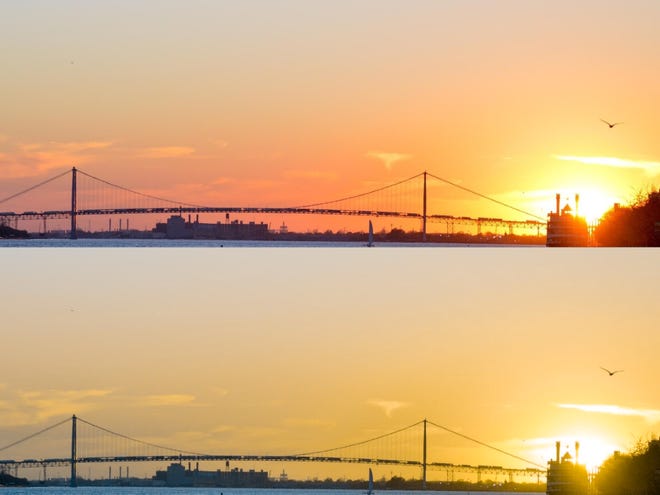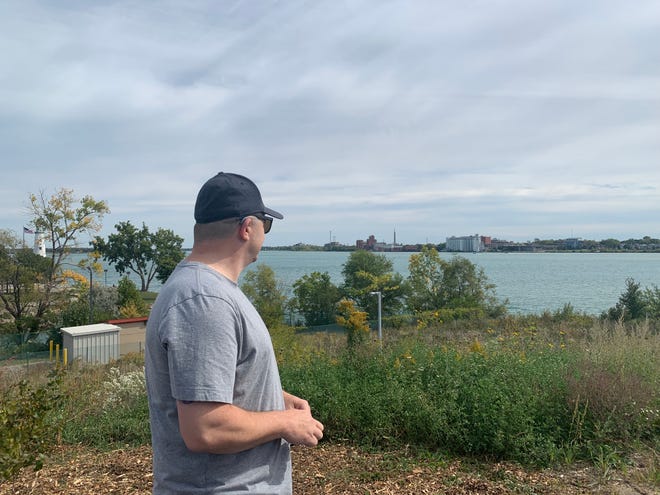
On Saturday afternoon, color-blind Michiganders saw the world through a new lens.
Standing at the top of William G. Milliken State Park overlooking the Detroit River, Eric Holland saw red leaves and purple flowers for the first time.
Normally, he said, everything seemed like a green cloud to him. When the colors are stacked together, it can be difficult to tell the difference.
With his new EnChroma glasses, the world is brighter.
EnChroma creates lenses that use special filters to help colorblind people see a wider range of colors and see it more “clearly, vividly, and clearly”. One in 12 men and 200 women is colorblind, according to the company, which totals about 425,000 Michiganders, according to the company.
Two Metro Detroiters, Holland and PJ Veltri, were given personalized glasses at the event, and the park also installed two scenic audiences—designed for people who are colorblind.
Two EnChroma “special sights” are planted on the ground at the summit for anyone to view. The stationary telescope is funded by the U.S. Fish and Wildlife Service’s Detroit River International Wildlife Refuge.

Ron Olson, DNR’s director of parks and recreation, said they are planning to have more EnChroma special audiences in parks across the state.
“They’ve really added a nice feature to people who are colorblind and created some better accommodations for everyone here,” he said.
Veltri, a 32-year-old theater technical director, said he was surprised by them when he first signed a pair of glasses in 2016.
He said he was used to being colour blind, but it still affects his daily life. For example, when he painted for his work, he had to choose colors “very carefully”.
“When I play Wordle, it’s green and yellow boxes, and if it’s midnight, I don’t know what they are,” he explained. “Thank goodness someone has a colorblind mode in it, so it’s blue and orange for me now.”
A common misconception is that all colorblind people cannot see any color, he said.
“I can still see the color,” Veltri said. “The sky is blue and the grass is green. It might look a little different to you. The problem arises more when (the colors) overlap each other.”

Hollander first discovered he was colorblind when he was 17 when he took the military entrance exam. He said he’s been wanting a pair of glasses with this technology for a while now, and it appears to be slowly becoming more accessible.
“We’ll probably head north after the fall colors start to show up because I’ve always loved fall colors and I think I’ve missed a lot compared to what I’ve seen here (with the EnChroma glasses),” Holland said.
Wearing glasses in real life isn’t like the videos you see online, where the colorblind person falls to the ground and immediately starts crying, Veltri said. It took a minute to adjust, and then everything started to get more vibrant and there were colors that he couldn’t see before.
“I don’t want to take them off.”
Contact Emma Stein: estein@freepress.com and follow her on Twitter @_emmastein.